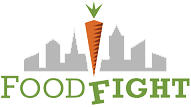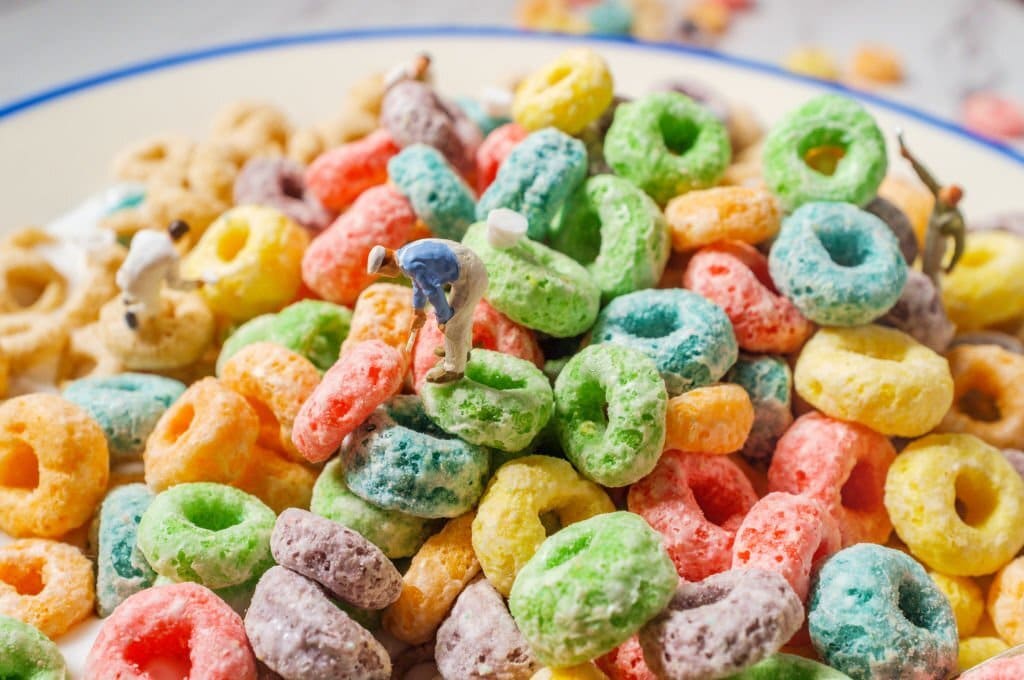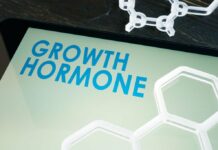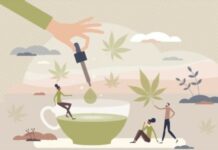In the following article, you will learn why artificial food colors are a valid health concern and why everyone should also avoid one specific natural food color (Annatto / 160B).
You will also learn why these food colors are so common and why we recommend using natural food coloring powders and gels derived from plant-based sources as a safer alternative.
Artificial Colors: The Hidden Dangers Lurking in Your Food
Most people, even those who take great care with their diet, are simply unaware of just how widespread the use of artificial food colors has become in modern food production and how harmful these products may be.
In fact, it is often said that consumption of artificial food colors has increased by over 500% in the past 50 years.
The reason artificial food colors are so widespread is simple. The production of food has become so heavily processed that a huge percentage of the natural colors (not to mention flavors and nutrients) are stripped away, leaving food that looks bland and unappetizing.
Basically, due to the way food is now produced, much of the ‘good stuff' is stripped out, and in an effort to make our food look more attractive for consumption, artificial substitutes are added, in post-production.
To address the problem of bland-looking food that would otherwise sit on the supermarket shelves and remain unloved, the majority of manufacturers add artificial colors to make these items appear more appetizing.
That's right. You didn't really think those nice yellow-looking muffins you picked up in the supermarket's bakery section were that color from the natural ingredients used, did you?
Artificial colors are commonly found in the following foods:
- Baked goods
- Meat products
- Seafood
- Cereals
- Yogurts
- Salad dressings
- Tinned foods
- Confectionary.
Why Choose Natural Food Coloring?
So what's the big deal? Surely if artificial colors are being added to our foods, they are tested and proven to be safe – right? Not really!
We hate to break it to you, but many of the chemicals being added to our foods to either increase their shelf life (preservatives) or look more appealing (food colors) are derived from synthetic and even industrial sources, for example, petroleum.
These additives are not rigorously tested and, in many cases, are known, or at least suspected, to have serious health implications, especially for children.
Natural food coloring powders and gels are derived from natural sources such as plants (vegetables and herbs) and seeds and, as a result, do not pose the same health concerns.
The other problem is that no long-term testing has yet been conducted that has definitively quantified the cumulative effects of the long-term consumption of these additives.
The other issue here is that our bodies are not terribly efficient at removing these chemicals from our systems once consumed.
These substances are not naturally intended for human consumption.
As a result, levels build up over time and may interact with other additives, resulting in long-term effects that are presently unknown and difficult to quantify accurately.
Consider the following as an example.
It is commonly believed that red cordial makes some kids a little hyperactive. However, it's very likely that this altered behavior isn't just attributable to the high sugar content but is, in fact, more likely due to the artificial food colorings contained in most cordials, which are strongly linked to hyperactivity and behavioral disorders in children.
Even more concerning, certain artificial food colors are likely carcinogenic.
That's right, not “linked to” cancer or “suspected of being” carcinogenic – these additives are “likely” carcinogenic.
Concerned yet? Rightfully so!
Here's a direct quote from a study conducted in 2012 at the University of California, Los Angeles, CA, USA.
“A comprehensive review of all nine currently U.S.-approved dyes used to color our food has found that every one of them raises health concerns. Red 3 causes cancer in animals, and there is some evidence that other dyes may also be carcinogenic.“
Source: https://www.ncbi.nlm.nih.gov/pubmed/23026007
Commonly Used Artificial Food Colors and Their Health Implications
Below you will find a list of some of the most commonly used artificial food colors (and one natural food color we also recommend avoiding) and the health implications shown in scientific studies.
Yellow 5
- Most commonly found on: Breakfast cereals and baked goods
- Health implications: Hypersensitivity and behavioral disorders in children. It also contains Benzidine, a known carcinogen. Source: (https://www.cancer.gov/about-cancer/causes-prevention/risk/substances/benzidine)
Yellow 6
- Most commonly found on: Sweets and confectionary items
- Health implications: Studies have shown Yelow 6 to cause adrenal tumors in lab animals. Source: https://www.ncbi.nlm.nih.gov/pubmed/631937
Blue 2
- Most commonly found on: Confectionary items and pet food
- Health implications: One study suggests an increase in the incidence of tumors in at least one strain of hamsters. Source: www.ncbi.nlm.nih.gov/pubmed/631937
Red 3
- Most commonly found on: Baked goods, confectionery items and maraschino cherries
- Health implications: Banned by the FDA for use externally on the skin due to increased risk of thyroid cancer, but not banned for consumption. Source: https://nutritionfacts.org/2015/04/30/coloring-to-dye-for-dangers-of-red-no-3/
Red 40
- Most commonly found on: Breakfast cereal, desserts and confectionery items
- Health implications: Contaminated with known carcinogens. Source: https://cspinet.org/new/201006291.html
Green 3
- Most commonly found on: Confectionary items, cosmetics and medications
- Health implications: Studies have shown increased bladder and testicular tumors in mice. Source: https://cspinet.org/sites/default/files/attachment/food-dyes-rainbow-of-risks.pdf
It is, of course, important to note that the majority of studies referenced above use animals as test subjects, and as such clear evidence does not always exist that proves that these colors may cause the same results in humans.
It's also important to note that the dosage used (while a known carcinogen) may be considered safe in some cases. However, as noted above, long-term testing hasn't yet been conducted that has quantified the cumulative effects of the long-term consumption of these additives.
The real question, in that case, is, is it worth the risk, especially when there are safer alternatives available?
160B – A Natural Food Color to be Avoided
- Most commonly found in Dairy products and baked goods.
- Health implications: Linked to ADHD, ADD and Autism.
Surprisingly it's not just artificial colors that are considered harmful. This is an important distinction, as many consumers are misled by packaging that advertises “no artificial colors.”
Annatto or 160b (which is derived from the tropical plant Bixa Orellana) is becoming more common in food and cosmetic products as it allows manufacturers to market their products as being ‘free of artificial colors.'
Natural Food Coloring Powders and Gels
So what can we do to avoid consuming artificial food colorings?
Firstly consider consuming whole foods more regularly. This just makes sense from a nutritional standpoint and from the perspective of avoiding harmful food additives such as artificial colors.
The fact is, the less processed your food is, the far more likely it is to be safe for you and your family, not to mention more beneficial from a general health standpoint.
Secondly, if you use food colors when cooking at home, there are a number of natural food coloring powders and gels available.
- McCormick Color From Nature, 0.51 oz
- Natural Plant-Based Food Coloring, Vegan Friendly, for Baking, Icing, Fondant, DIY Projects, .70 fl oz, Set of 4
- India Tree Natural Decorating Colors, 3 bottles(red,yellow,blue)2.25 oz/63 grams
- Watkins Assorted Food Coloring, No Artificial Dyes, Red/Yellow/Green/Blue, 1.2 Ounce
- ColorKitchen Cupcake Coloring Set (PINK, YELLOW, and BLUE) – Non-GMO, Plant Based, Gluten-Free
- Beet Root Powder-4oz – Natural Food Coloring
Natural food colors, as noted above, are typically derived from plant sources. In most cases, the plant source is dehydrated and then ground to form a natural powder.
While there are some disadvantages to using natural colors, the benefits far outweigh the potential health concerns listed above.
And while it is relatively simple to make natural food coloring at home, there are inexpensive commercial products available that are specially formulated to avoid some of the negatives you may experience if making these yourself, such as taste and colors not being as strong as their artificial counterparts.
While it takes a little more effort to track down foods that use natural food colors or natural food coloring powders and gels when cooking at home, there is little doubt that it is certainly worth the effort.






